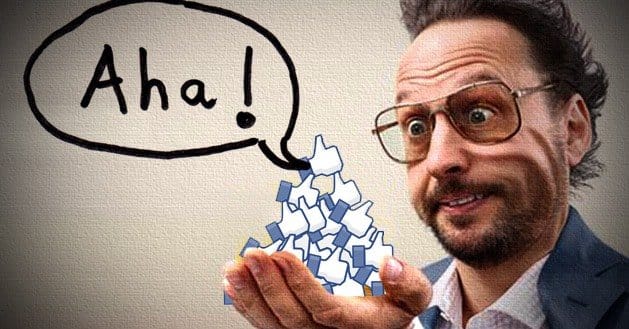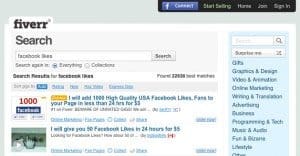 Written by ContentPowered.com
Written by ContentPowered.com
For a long time, when social media was growing but search engines had not quite learned how to monitor them properly and users were less discerning, it was all about the numbers. Success on social media was having a high number of fans. The more fans your Facebook page had, the better off your business would be.
The benefits, even then, were nebulous. Google experimented with considering how many fans a page had in order to rank it, but it was little more than an experiment. They realized what many businesses have come to learn since; the number of fans is a largely invalid metric. If you have 100,000 fans following your page, but only 100 of them are real people, you may as well not have a page at all.
So, for a while, businesses were opting to purchase large numbers of fans to inflate the numbers on their page, making them look more legitimate and attracting real fans. At the same time, many bloggers were writing about how this technique was of some use, though of questionable ethics. Today, much of that advice remains published, even if it’s no longer valid. Some businesses, not knowing better, still purchase likes. And, of course, many predatory services still sell likes, even knowing they’re not valid.
How can you tell if a business page purchased likes?
Examine the Like Box
In the new Facebook page layout, the Like box is the top of the left column. It displays openly the number of people who like the page, and on some pages, a star rating left by users reviewing the business. On its own, this information isn’t very helpful in determining if a page bought followers. You can guess that a small town dental clinic in a city with a population of 50,000 isn’t going to have 200,000 likes, and if they do, something is clearly wrong. The real insights come when you click the box.
As a personal user you can see a few basic insights about a page, though nothing detailed. You can see the number of people following the page in total, the number of likes in the last week, and some very basic information about the fans.
For example, say you click on that small town dental clinic’s Facebook page and you see that, even though they are based in Arizona and are servicing a small town, they have a sizable following based in Bangladesh. This is a sure sign that they purchased followers. No legitimate small town business is going to have an audience large enough in the Middle East to be the most engaged city, unless they’re actually based in the Middle East.
If you’re lucky enough to catch the business right when they purchased likes, you may see a drastic spike in the weekly metrics. It’s unlikely that you’ll catch this, however. Small spikes in traffic may be caused by the start of a contest or the implementation of a new ad campaign, so that alone isn’t necessarily a good indicator.
Examine Post Engagement
This one is a bit about numbers and a bit about the gut feeling you get when looking at a page. If you’re looking at a page for a business, and that page has 100,000 likes, but only has 10 assorted comments, likes and shares for their posts, something’s up.
This happens because of the type of fans you receive when you buy followers. Most of the time, the accounts were created by robots and filled out with the absolute minimum amount of information necessary to make the profile look real when the security settings are turned up. If they are actually manned by humans, chances are those humans are located in Bangladesh, India, China, Egypt or another such nation, where a small amount of money from the United States goes a long way. These users created dozens of profiles to leverage. The business pays a company, which splits the cash and pays a bunch of people in these countries, who each use their stable of accounts to like the business.
Of course, it can be hard to tell the difference between a legitimate audience and an audience of robots when engagement on Facebook is low as it is. A legitimate audience of 100,000 might only provide a handful of comments, a few dozen likes and a dozen shares.
That’s where the gut feeling comes in. There’s no way to tell if a given post has less likes than normal based simply on the numbers. Still, if the number of followers and the engagement numbers seem too wildly disparate, it’s a sign to be wary of the business and its audience.
Consider the Milestone Timeline
One of the tips above mentioned catching a spike during the week when you’re looking, seeing when the purchase of likes occurs. This is rare, but you can still consider the time and growth of the page. If a business started their page six months ago and already has 50,000 fans, how many of those fans are legitimate? It’s possible to grow a business page that fast, but the business generally needs to be established in person and might need to be a state-wide or national chain to achieve such rapid growth.
On a business page, you can follow the timeline on the upper right of their feed. Scroll through it and see if they mention their growth or post about their milestones. It’s always possible that they have posts flagging dates for milestones, and if those dates are implausibly close together, it’s a warning sign.
Take a Look at Other Social Profiles
Sometimes, a business will put more time and money into one social profile over the others. If they have a Twitter account as well as a Facebook account, for example, consider looking at their Twitter followers. If they have a reasonable 5,000 followers on Twitter and an unreasonable 100,000 on Facebook, they might have bought Facebook likes without paying attention to balance.
If the numbers are the same, you can look through their Twitter followers, which are a bit easier to determine as spam than Facebook followers. This is largely due to the fact that you can’t dig through the followers list on Facebook to see anything more than what the like box details. Twitter allows you to poke through them, however, which gives you a chance to see if some of their followers look like fake accounts.


